Why are there sometimes bumps on the leaves of pear trees? Pear trees make a beautiful addition to any home garden. Their dark green, glossy foliage is luscious and full.
When healthy, pear trees provide wonderful shade to snack on the sweet, tart pears they produce from August to October.
Whether your garden boasts the nectar-like green Bartlett pear variety, the tender red and green Anjou variety, or the tan, crunchy Bosc pear, you’ll know just how satisfying it is to pluck a snack right off the branch.
Unfortunately, bumps on the leaves of pear trees cause their owners concern and detract from the tree’s overall appearance.
If your pear tree is starting to develop pimple-like lumps on its leaves, learn how to identify the cause and treat these lumps.
Table of Contents
What are the Bumps on the Leaves of my Pear Tree?
Bumps on the leaves of pear trees are caused by pear-eriophyid mites, which feed on new leaf growth in spring. They may damage fruit and lead to early leaf drop but aren’t life-threatening. Prune off affected leaves and spray the tree with lime sulfur in the fall and spring to remove pest insects.
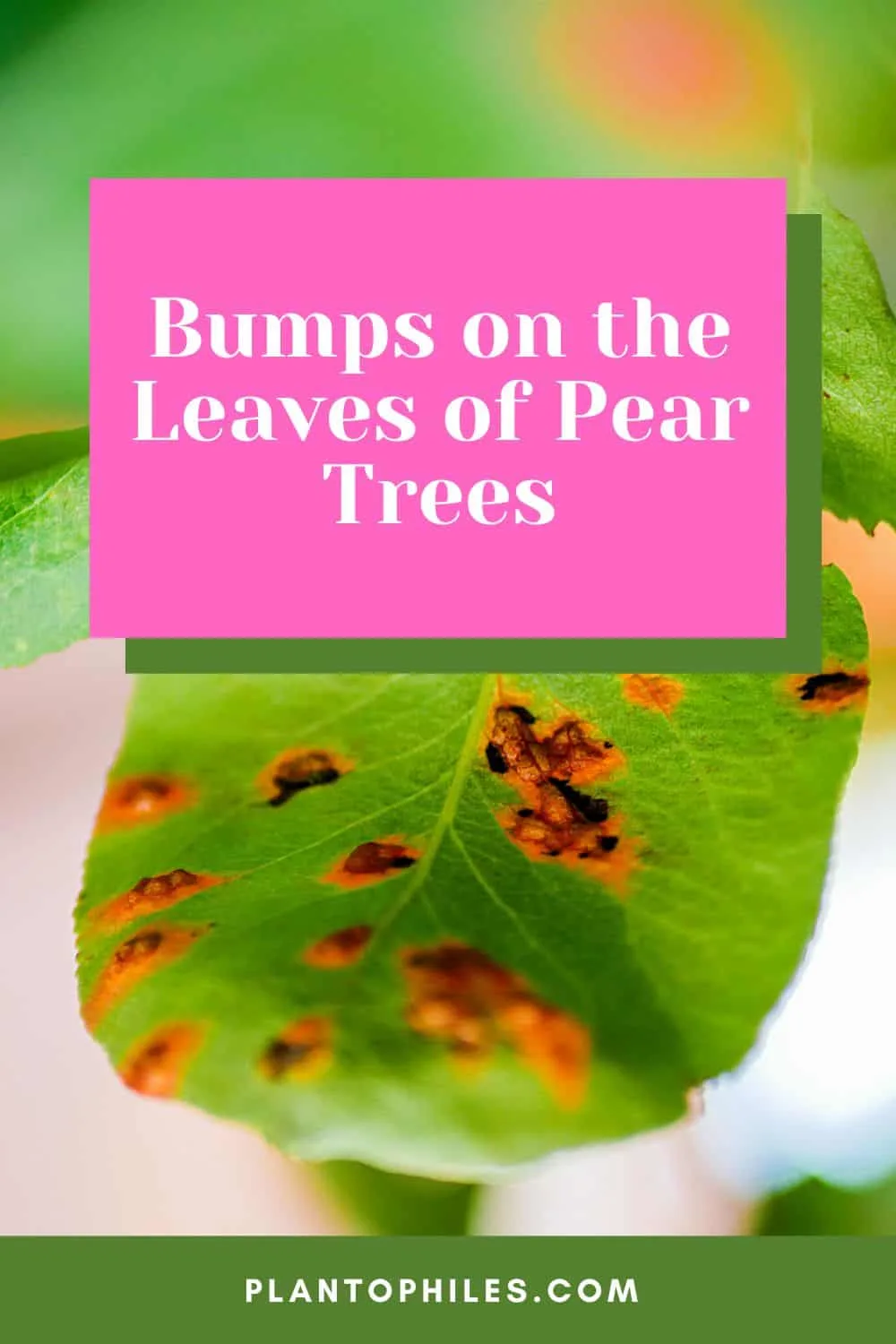
Pear trees are relatively sturdy. They can generally cope with low temperatures, weather most storms, and are a great plant for north-facing gardens.
That said, no tree is immune to the damage caused by insect infestations.
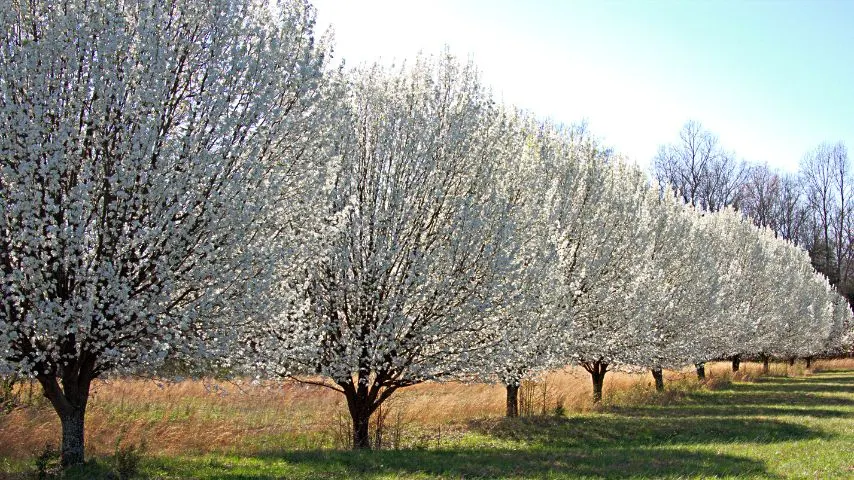
Like so many other trees (check out our advice on dealing with bumps on lemon trees and bumps on pecan trees), pears can become unwilling hosts to minuscule mites that wreak havoc on their foliage.
If you notice bumps appearing on your pear tree’s leaves, read on to learn how to identify the cause of pear leaves, discover why the bumps appear and familiarize yourself with how to treat the problem.
Pear tree leaf disease identification
There are several reasons why bumps might appear on the leaves of your pear tree.
However, the most common cause is the presence of pear-eriophyid mites, also known as rust mites or pear leaf blister mites.
The first tell-tale symptom of a pear leaf blister mite infestation is raised pinkish-red or green pimple-like lumps.
Affected leaves will soon begin to turn brown and eventually blacken as their tissue dies from the damage caused by mite wounds.
The leaves may then begin to drop from the plants.
Sometimes, the mites migrate to the pears and feed on their skin. This causes similar brown lumps to appear on the pears.
Are Bumps on Pear Tree Leaves Bad?
Bumps on pear tree leaves are largely a cosmetic issue. If preventative measures are taken in the fall and spring to mitigate the infestation, it is possible to eliminate the problem without the tree’s long-term health being affected.
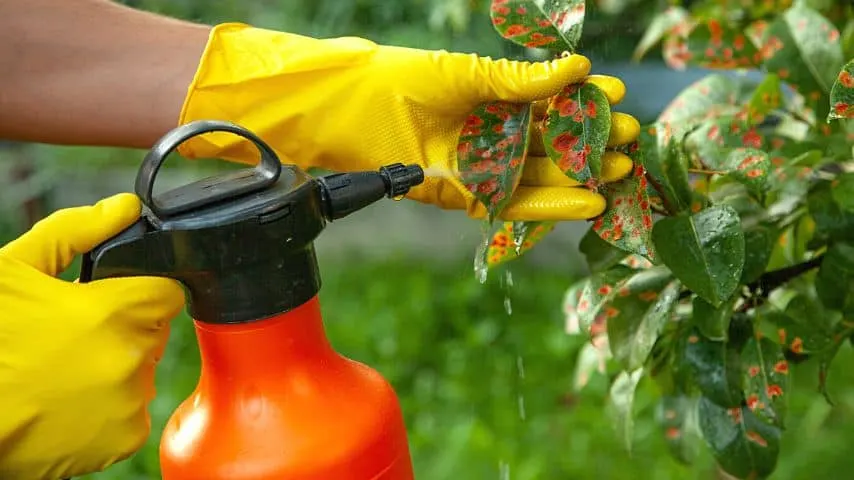
However, bumps on pear leaves in the short term mean your pear harvest may suffer.
Understanding why plants produce fruit can help you care for your pear tree when facing difficulty.
If leaves drop prematurely, your tree cannot photosynthesize effectively because it has less healthy leaf surface area to take in the sun. Your pears may sunburn because they lose the natural shading provided by the foliage.
Ensure you follow all treatment recommendations to minimize the adverse effects of mite damage in the current season and work towards eliminating them before the next growing season.
What Pear Rust Mites are
Pear rust mites, also known as pear blister mites, are microscopic insects whose mature females overwinter in the buds of pear trees.
They are a kind of gall mite and are invisible to the naked eye at just 0,008 inches (0.2mm) when fully mature.
When the buds emerge in the early spring, the mites emerge from the buds and begin to suck the sap out of the new leaves.
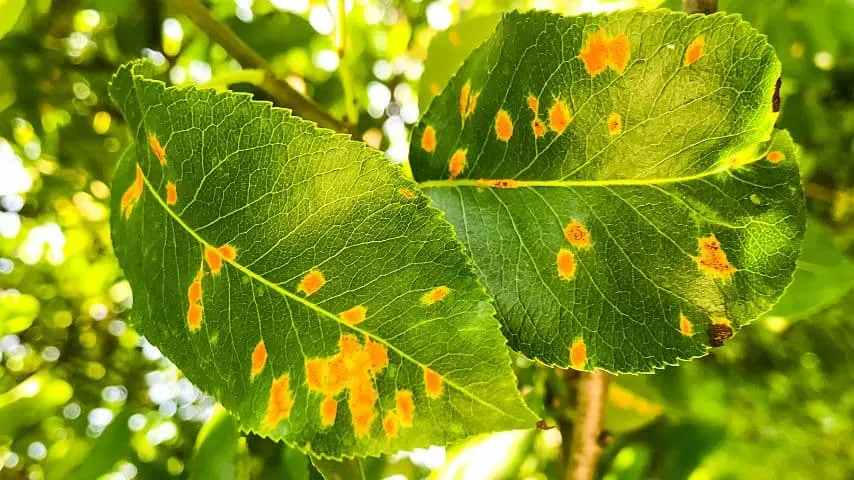
As they feed, they secrete chemicals that react with the leaf tissue, resulting in raised growth.
How to Treat Bumps on Pear Leaves
Fortunately, pear blister mites don’t have an overly negative impact on pear tree health.
If there’s only minor damage done, then simply prune off the affected leaves.
The bad news is that, as with the damage caused by all gall mites, you cannot reverse leaf blistering within a single growing season.
Your best bet is to let your tree see out the current season and then take the preventative measures detailed below to avoid the problem from emerging again next season.
However, if your tree is badly affected, spray its foliage with a chemical solution such as abamectin, carbaryl, or fenbutatin-oxide.
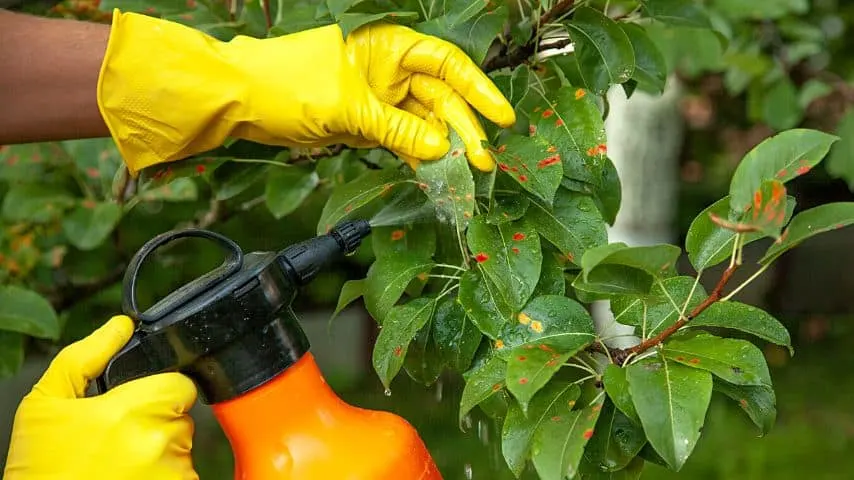
These solutions will kill mites, but they are not great for your tree’s health because they will also eliminate other forms of biodiversity.
How to Prevent Bumps on Pear Tree Leaves
The best thing you can do when you notice pinkish blisters emerging on your pear tree leaves in early spring is to take preventative steps. This ensures the problem doesn’t reoccur the following growing season.
The first thing you should do is to clear regularly the fallen leaves from under your pear tree.
Bag them up in a light-proof bag and dispose of them as regular waste. This will prevent mites from overwintering in fallen foliage and climbing back up the trunk next spring.

Repeat this process until the end part of the growing season arrives.
The next thing to do is spray your tree with lime sulfur in the fall. Repeat it in the spring before the new growth emerges.
How to Feed a Pear Tree
Feed pear trees once a month. Use a fertilizer with a balanced NPK ratio of 10-10-10 or 20-20-20. NPK stands for nitrogen (N), phosphorus (P), and potassium (K). Make sure the fertilizer enters the soil. Water thoroughly after using any fertilizing. Either use a slow-release fertilizer or a liquid fertilizer.
When using a slow-release fertilizer, ensure it reaches below 1 inch of the soil (2.5cm). Fertilize every 6-9 months.
When using a liquid fertilizer, fertilize monthly in spring and summer during the main growing season. Refrain from fertilizing in autumn and winter.
Keep your pear tree in good health by keeping it watered and using one of the best fertilizers for fruit trees to keep it well-nourished and strong.
The healthier a pear tree is, it will have a better chance of withstanding pest damage.
Conclusion on Bumps on the Leaves of a Pear Tree
Treat by pruning off affected leaves and spraying the tree with lime sulfur. Pear-eriophyid mites cause bumps on the leaves of pear trees.

Daniel has been a plant enthusiast for over 20 years. He owns hundreds of houseplants and prepares for the chili growing seasons yearly with great anticipation. His favorite plants are plant species in the Araceae family, such as Monstera, Philodendron, and Anthurium. He also loves gardening and is growing hot peppers, tomatoes, and many more vegetables.


